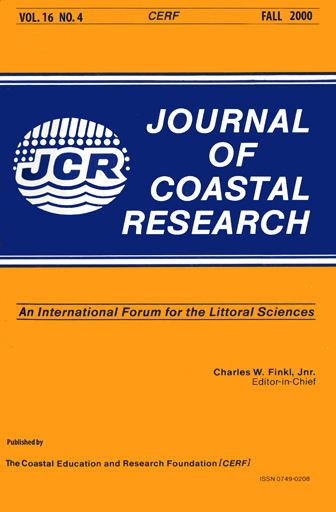Geochemistry of Surficial Sediments from Sebastian Vizcaino Bay, Baja California
Keywords:
Marine sediments, geochemistry, upwelling, organic carbon, metals, phosphoriteAbstract
Thirty-seven surficial sediment samples from Vizcaino Bay, Baja California, are analysed for their phosphate, organic matter, carbonate, as well as metal contents (AI, Fe, Mn, Zn, Cu, Ni, Cr, Cd and Sr), Highest organic carbon concentrations (up to 15.1%) are found in deeper waters of the outer bay and also in a narrow area extending NW-SE adjacent to the eastern coast. Total carbonates are also enriched proximal to the eastern coast, with the highest concentrations found on Ranger Bank (36.9%), where it is associated with foraminifer-rich sands. Phosphate (P2O5) content is highest (22.3%; mainly present as francolite pellets, nodules and bone fragments) in shallow waters (29-70 meters) adjacent to Punta Santa Rosaliita to the NE of the bay, showing a sharp offshore decrease.
Geochemical partition analyses indicate that, except for Sr and Cd, all the metals studied occur mainly in the detrital fraction of the sediment, with minor but varying proportions occurring in the more reactive fractions. The regional distribution of non-lithogenic Cu, Cr, Ni, Cd and, to a lesser extent Zn, is mainly controlled by their association with organic matter. These elements show high concentrations in an area under influence of upwelled waters, and in the organic-rich bathymetric deep in the outer bay. Cadmium is mainly associated with the most reactive fraction of the sediments (either loosely adsorbed, as carbonates and/or Fe-Mn oxihydroxides), being enriched (4.09 ppm) directly below the coastal upwelling region. Different precipitation processes for Cd compared to Cu, Cr and Ni occur in the area, possibly due to the preferential input of Cd via upwelling and/or the relatively shorter residence time of Cd in waters above continental margins. The distribution of Sr is related to that of calcium carbonate, except for an area proximal to the coastal lagoons on the SE coast, where relatively high Sr concentrations are found (< 1725 ppm). Various metal enriched samples throughout the study area, suggest different lithologies and sources of the detrital components deposited. Of these, detrital Mn is associated with sediments derived from the peninsular mainland NE of the bay and Fe, Cu, Cr, Ni and Zn with the lithogenic detritus on Ranger Bank.


